- December 18, 2014
- Posted by: peakalpha2023
- Category: Savvy

Priya Sunder cites why insurance is such an integral part of financial planning.
Let me tell you a story. It’s a true story. I have known Ram since we were kids. He stayed in the house at the end of the road from mine. His mother made the most mouth-watering aloo bondas. At 18, Ram, the brilliant student, was poised to conquer the killer IIT entrance exam. And he did. He then went on to complete his PhD at Stanford, and landed a job as faculty at an Ivy League university. He married Surya, a petite beauty and had a baby girl Myra soon after. When Surya’s family came visiting over a Thanksgiving weekend, Ram drove the family to a riverside resort. Surya, her brother and Myra were on one boat; Ram and his sister-in-law on another. While manoeuvring a bend in the river, the current caught Ram’s boat and it capsized. While the sister-in-law was pinned by the boat to the pillar of an overhead bridge, Ram was dragged under the water by the swirling current. Ram was pulled out by a rescue team 15 minutes later and pronounced dead. A shattered Surya returned to India with Myra soon after. I met her a few years ago when she was visiting Bangalore. Myra, then 17, was pursuing an expensive undergraduate program at Boston University in the US. I asked Surya whether Myra had got a scholarship. Surya then explained to me that Ram had taken an insurance policy to secure Myra’s education as soon as she was born. He had also insured his life with a hefty cover so his family would be secure even if he was not around to provide for them.protective cover.
This story has stayed with me since then. And in the last 10 years of running a wealth management company, I have insisted on my customers putting a life cover in place before they start other investments. I believe that death and disability are low probability, high impact events. When they occur, they turn your world upside down and scuttle any financial planning you may have done.
Stabilizing Pillar
Death is not something most of us like to talk about; and hence, life insurance is not the most enthralling
of subjects. Yet, it is one of the pillars of personal finance. You can’t plan for upsides in your personal finance until you have covered the downsides in your life.
One easy way to determine whether you have adequate cover is to total up your annual expenses. Multiply this figure by 14 — this is a simple way to come up with the level of insurance that will ensure that the family meets its annual expenses in the absence of the main earning member.
Let us assume that the family incurs ` 12 lakh of expenses annually. If this figure is multiplied
by 14, we get a figure of about ` 1.7 crore. Incidentally, the figure 14 is an easy rule-of-thumb to determine an insurance amount that will help cover the family’s annual expenses just through the interest payments alone, without eating into the insurance corpus.
1.7 crore is then the minimum level of insurance cover required because if this amount is invested in a fixed deposit that generates a post-tax interest of 7%, then the interest income of ` 11.9 lakh will take care of the family’s annual expenses.
That is the bare minimum level of life cover the breadwinner of the family must have. This amount is called the family welfare fund. If both partners are working, apply the same rule of 14 to the part of annual expenses that each partner contributes.
Women & Insurance
Women typically tend to overlook insurance while planning their finances. But ensuring that each partner
in a marriage has adequate life insurance safeguards your current lifestyle and future goals even if one partner passes away. There are broadly three types of life insurance — term, endowment and Unit Linked Insurance Plan (ULIP). The term insurance is the most basic form of life cover. The biggest benefit of this kind of plan is that a high level of cover can be purchased for a relatively low premium.
If the policy holder dies during the policy term, the insurance company pays the beneficiary the life cover amount. If he/ she survives the policy term, there are no payouts. The endowment plan is a combination.
of protection and savings i.e. a term plan combined with a fixed deposit. In case of death, the life cover is paid to the beneficiary along with any bonuses accrued in the policy. Typically, the annualized returns from these policies are between 4 to 7%. Endowment plans are suitable for risk-averse investors who do not wish to participate in the equity markets. The ULIP combines protection with investment (i.e. a term plan combined with a mutual fund). Part of the annual premium goes towards providing a life cover. The remaining premium, net of charges, is invested in a fund operated by the insurance company. In these plans, the life cover and/ or accumulated fund value is paid out to the beneficiary on the death of the policy.
Medical Expenses
Apart from life insurance, women must have adequate medical insurance. Women typically live longer than men and hence, have a greater requirement for healthcare as they get older. They also have more complex health conditions such as arthritis, hormonal imbalance and gynaecological complications. An adequate amount of health cover is in the range of Rs 15 -25 lakh. This amount needs to be pumped up frequently as medical inflation in our country is fairly high.
Health Demands
Most women are covered only under their organization or their spouse’s corporate medical insurance plan. Often, such group insurance plans do not have a very high level of cover. The company will keep you or your spouse on its rolls as long as you are productive. If you come down with an ailment that requires you to be hospitalized for a length of time, the corporate health may take care of immediate medical expenses. But there is no guarantee that the organization will keep you on its rolls for extended periods.
of absence. If you lose your job, you are much worse off than before because you lose the corporate insurance. No other private insurer will be willing to cover you then since you are now in a higher risk category because of your illness. So go on, put that life and medical cover in place quickly. Don’t sleep on it too much. Otherwise, you might wake up to its benefits too late in the day.
Priya Sunder is Director, PeakAlpha Investments, an awardwinning wealth management company. www.peakalpha.com
